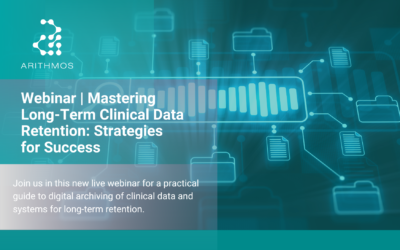Digital Transformation is a transformation of all the activities, processes and competencies in a way that allows us to harness the advantages of new digital technologies. Right now, pharmaceutical companies face a difficult choice: either evolve with the new era by building a digital organisation or risk becoming less competitive on the market as they fail to embrace the change.
On the 21st of October, we hosted a complimentary webinar on Digital Transformation titled “Digital Transformation in Pharma: Challenges and Enablers”. During this webinar, we discussed the challenges that pharmaceutical companies face on the road to digital success and how to overcome them.
Continue reading to discover the questions from the Q&A session of the webinar.
Register today to get access to the webinar recording
Should Artificial Intelligence to be included in pharmacovigilance digital transformation plan? How should the companies approach it?
Artificial Intelligence is a term generally used to identify different technologies such as natural language processing (NLP), natural language generation (NLG), machine learning (ML) and many others. In order to understand what AI in pharmacovigilance is and how to approach it, it is fundamental to distinguish between Robotic Process Automation (RPA) and real Artificial Intelligence (AI).
- Robotic processes are the tools based on a fixed/static set of rules. Logic is predefined by humans and is given to the system to mimic human actions. Rule-Based/Static technologies are already available and have a well established position.
- AI refers to leveraging machine’s capability to imitate human ability to sense, learn, deduce and communicate. In this category we can distinguish between two types of AI:
- AI-based “Static technologies” that include components that are AI-based, but the “training” of the system is limited to the pre-release phase. Re-training of the model is limited to incident/errors. These are emerging technologies.
- AI-based “Dynamic Systems” that includes components that are AI-based and capable of continuously adjusting their behaviour also in production phase using a defined learning process. These technologies are “the technologies of the future”.
Keeping this in mind, a company should identify the area in which Risk and Effort benefit of automation are leveraged to grant the major benefit. For this reason, pharmacovigilance process owners should approach artificial intelligence by a progressive adoption of new technologies starting with process automation.
From the best Return Of Investment business case in pharmacovigilance, which are the recommend areas for digital transformation?
The objective should be optimisation while keeping your eye on evolution and revolution. The first investments should be done in maintaining your safety systems updated with current regulations. Another key point is to be able to obtain the highest value from the information collected through efficient reporting and analysis tool.
Considering that a leading market safety system already includes some process automations that mainly support case assessment, distribution & reporting phase, before starting investing in AI/new automations you should try to optimise the existing automations through proper system configuration/usage.
Taking into all the details mentioned above, other investments should result in automating:
- Case intake phase: Duplicate Check, Prioritisation/Triage can be considered good targets for automation
- Case processing phase: Full Data Entry and Medical Assessment are time-consuming tasks with high automation benefit and a currently low level of automation.
What is the weight of the lack of regulation, such as specific mention in the GVP in the use of AI in pharmacovigilance?
When it comes to Rule-Based/Static technologies (RPA) current validation guidelines are applicable.
In regards to AI-based “Static technologies” there is the need to extend current validation guidelines: white papers from FDA, some presentations from MHRA, collaborative areas like TransCelerate, Oracle ARGUS Safety Consortium can be useful.
Companies that are approaching these technologies are following the most conservative approach. This means that even if these technologies are possible and used, their implementation requires a big effort in validation, testing and maintenance.
Vendors, companies and regulators as part of the same ecosystem should work together to streamline and speed-up the process to create guidelines tailored to the new available technologies.
When it comes comes to AI-based “Dynamic Systems”, there is no guideline available. Future guidelines will be eventually required for these more transformative systems.
What are the main digital transformation projects implemented in the clinical research area?
Based on our experience, clinical research units are mainly evaluating the possibility to implement:
- Oversight platforms in order to fulfill ICH E6(R2) regulatory requirements about Sponsor Study Oversight
- Remote monitoring platform and eTMF. This represents an interesting opportunity since could be the opening door to moving to a paper-free approach. Electronic document management systems can support both remote monitoring platform and eTMF, but also QMS, Regulatory, CSV. Starting from the main requirements (clinical trials) pharmaceutical companies could enlarge the scope of the new technology.
- Evolution of EDC platforms: from on premises-hosted application suites to integrated or unified platforms that are cloud-based
What are the tools that can support change management process?
To support change management and make sure that the resources are commited to the change, we recommend to involve them in the introduction of the new technology from the very beginning.
During the user requirements phase, pharmaceutical companies can propose surveys to internal users about their needs (this helps in make them part of the decisional process).
In addition, training and workshops on the beta version of the new systems could be useful. They help to adapt the configuration of the system to the real requirements and make the change smoother.
We also recommend to define internal marketing initiatives to promote the change and raise expectations. This could result in users that “want to change” and not users that are “obliged to change”.




